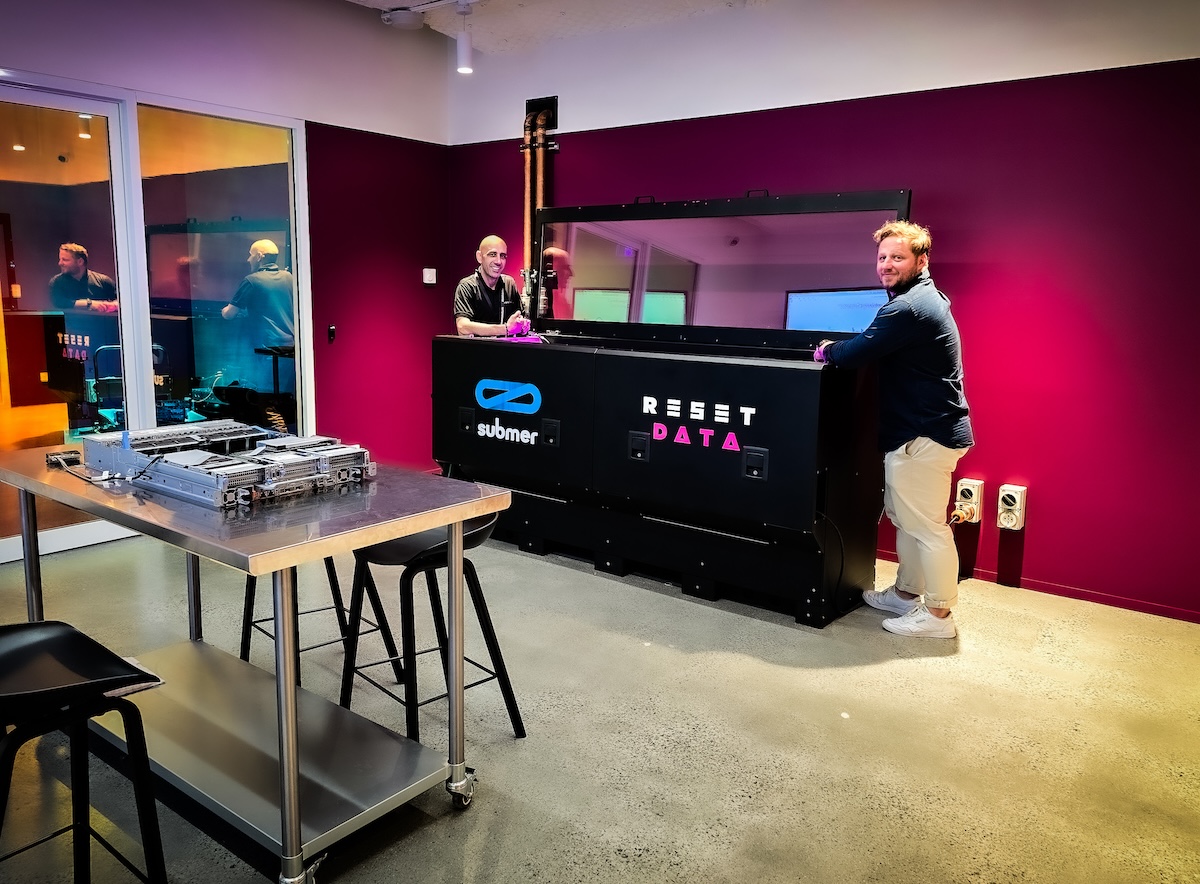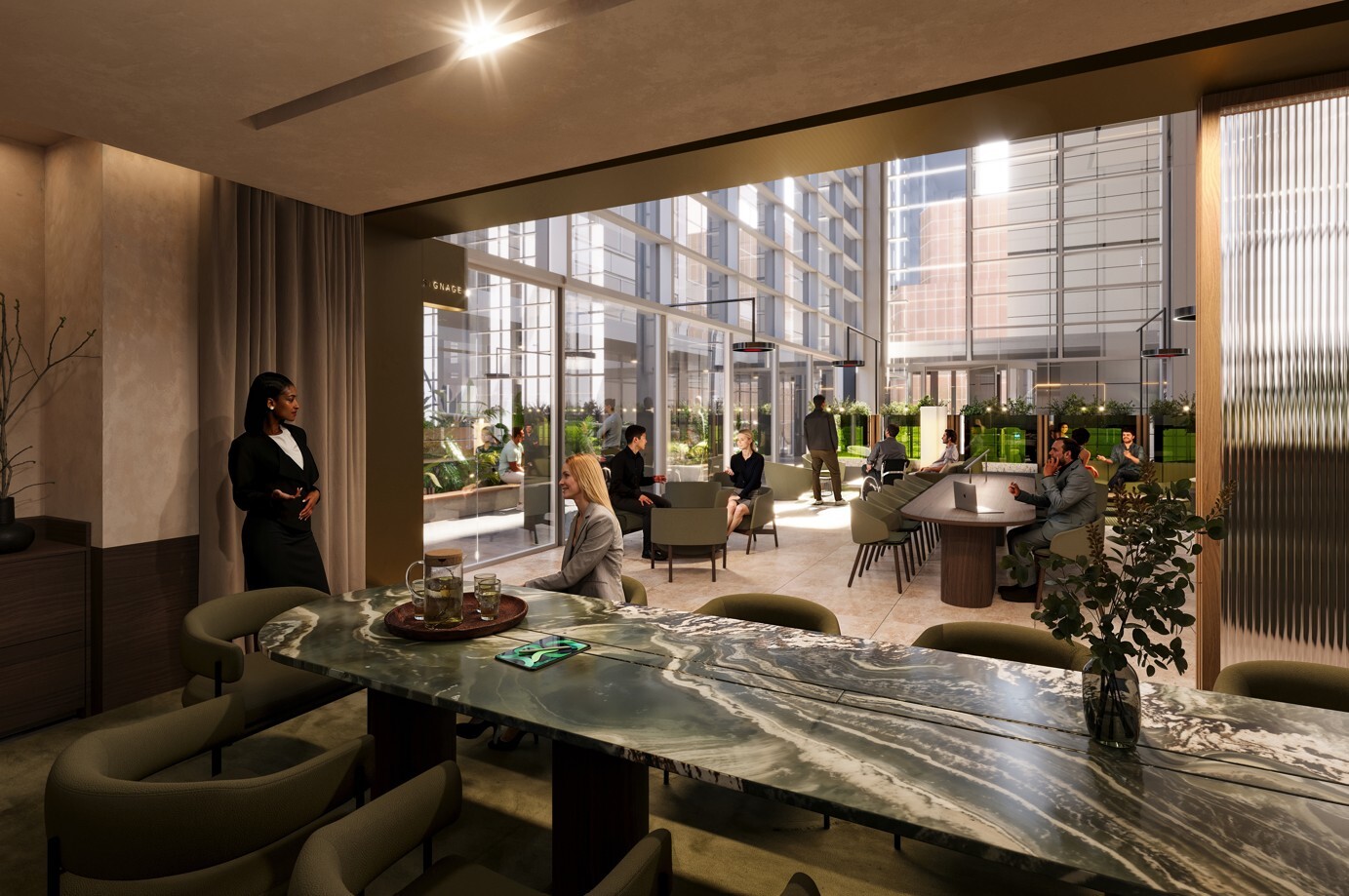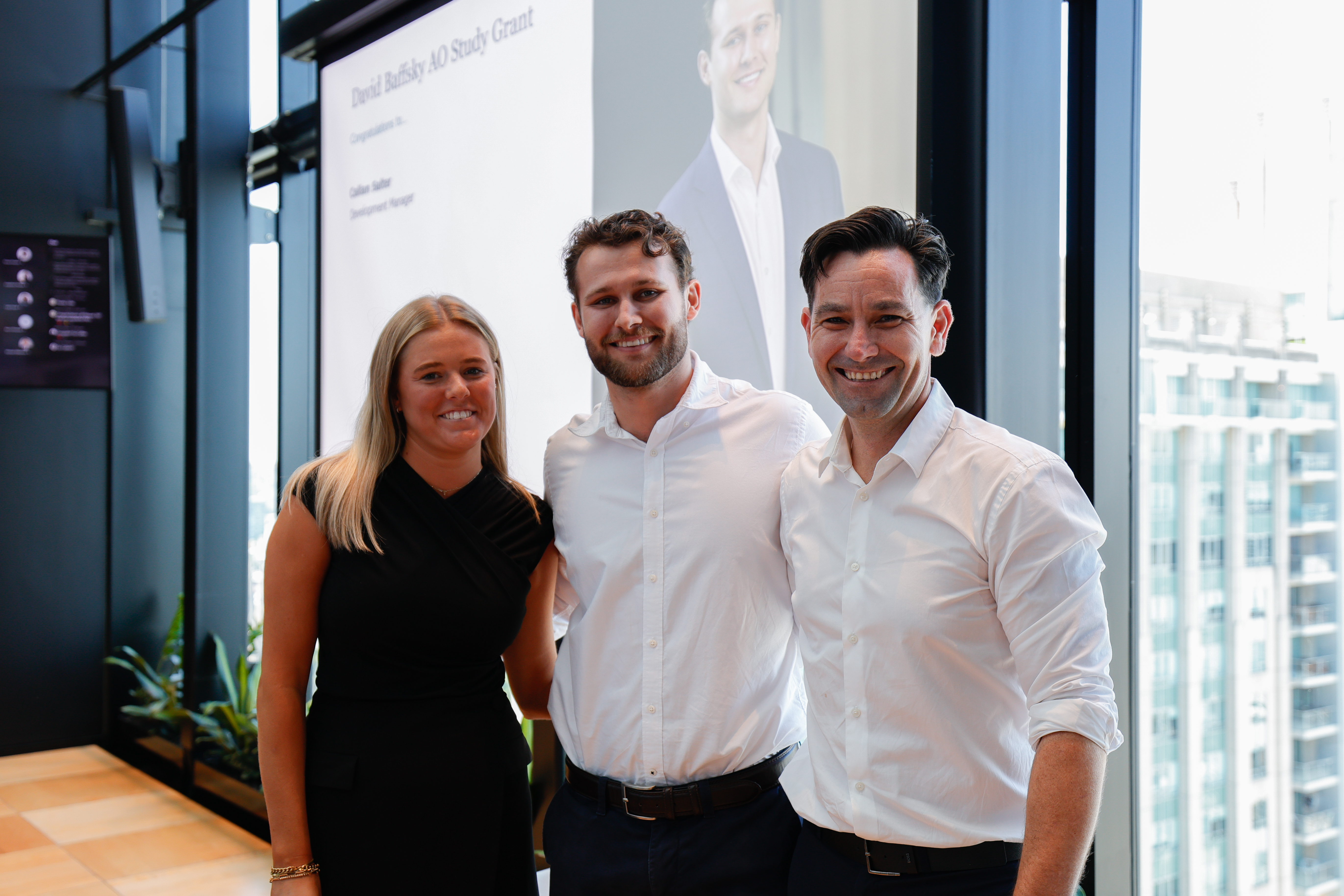Data centres with a difference

Two black boxes installed in Investa’s Barrack Place office tower at 151 Clarence Street in Sydney may look unremarkable. But these 100-kilowatt pods are part of a simulation facility for an innovative immersion cooling technology that is ushering in a new generation of data centres.
Investa worked with data centre specialist and cloud services provider, ResetData, to create a “showroom” at Barrack Place that cools data servers by immersing them in liquid, generating other benefits.
Cooling data servers with liquid is up to 1400 times more efficient than cooling them with air. This translates into a saving of up to 95% on cooling costs and can slash carbon emissions by around 45%.
Data servers generate a lot of heat and cooling them consumes a lot of energy. The International Energy Agency estimates that data centres were responsible for 1% of global energy use in 2020 and generated around 1% of emissions– statistics that haven’t changed much in a decade.
But that was then, and this is now. As demand for artificial intelligence grows, the world’s electricity consumption from data centres is predicted to double over the next two years alone. This means, by 2026, data centres could consume as much energy as the entire nation of Japan, with 125 million citizens.
The hundreds of millions of daily queries asked of ChatGPT, as just one example, cost around 1 GWh of energy each day, according to some estimates. This is the equivalent of the daily energy consumption of about 33,000 households.
Add in Internet of Things (IoT) devices, which by the end of 2024 could exceed 207 billion, as well data consumed by the five billion social media users, millions of bitcoin miners, gamers and owners of autonomous vehicles, and it is easy to see why the world has an enormous problem.
“We can’t continue down this current path of data consumption,” says Bass Salah, ResetData’s Managing Director.
“Australian data centres currently use around two gigawatts of power a year – that’s more than South Australia’s entire annual power consumption – and they are on track to consume more energy than the whole state of New South Wales.”
“We are now using a horse to pull a semi-trailer. Our incumbent data cooling technology just can’t keep up.”
Water wise, energy smart
ResetData is the Australian and New Zealand distributor for Submer, a Barcelona-based technology company that developed the innovative immersion cooling technology. ResetData has an established customer base and several sites using the technology.
Most data centres use standing racks of servers that are cooled with air conditioning. But as computing demand increases, and as the number of transistors in processors double roughly every two years, according to Moore’s Law, data centres are becoming hotter and denser. This requires more energy to cool them.
Submer’s immersive cooling technology submerges computer servers and other components in tanks filled with a liquid that does not conduct electricity (called a “dielectric liquid”). “One liquid-cooling pod can accommodate the same computational capacity as 10 racks of air-cooled servers,” Bass notes.
Mains water exchanges heat with the biodegradable fluid in which the servers sit; this water can be heated to between 40 and 60 degrees – the same temperature as domestic tap hot water – and connected to a building’s hot water supply.
“A potential bonus of the technology is the opportunity to recycle the hot water through the building, and this is something we are exploring,” says Harrison Murray, Investa’s Senior Development Commercial Manager.
The Investa team is looking at future possibilities that ResetData’s model can provide. This includes repurposing space in existing office buildings; providing new technology amenity for tenants; and potentially cutting tenant emissions and outgoings.
Tenants stand on the edge
Giant data centres are cropping up all over Australia, but edge data centres present an attractive alternative for tenants looking for speed and sustainability.
Edge data centres are smaller than the hyperscale facilities now found in business parks or on the fringes of our cities, Bass explains. These facilities provide computer power closer to where the data is generated and used, which supports real-time data processing and analysis, reduces response latency and optimises bandwidth.
“We can’t keep shipping trunks of data out to the suburbs and back. We need real time computational action in the city to deal with all the data we are creating – and edge data centres do this,” Bass says.
Not every tenant will need edge computing, but many will. Think engineering, architectural and design firms working with large 3D models and image files, pharmaceutical and biotech firms manipulating massive data sets or undertaking complex simulations, media production companies creating and sharing high-resolution animations, financial institutions handling large-scale data analytics and algorithmic trading.
For commercial building owners, offering high performance data centre space is a “game changer” that could offer new tenant amenity, Harrison adds.
“With immersion cooling, we can dramatically cut down the amount of real estate we need for data centres. One megawatt, air cooled, might need 500 sqm of space. The same megawatt, immersed in a cooling pod, will only need 70 sqm of space. And because the pods are modular we can roll them out as we need them.”
Leading landlords turn brown to green
Many commercial buildings are in prime CBD locations and have the power and size required to be suitable sites for immersion cooling. At Barrack Place, for instance, vacant basement space and latent power was ready to be repurposed. Barrack Place also has one of Australia’s first operational digital twins. But do buildings need to be ‘smart’ to use immersion cooling?
“Buildings need secure space with the structural capacity of a car park because the pods, when full, weigh almost as much as a car,” Harrison notes. “A building also needs sufficient surplus power capacity. Barrack Place had both.”
“For us, this is the start of an exciting journey and we are exploring other possibilities not only within our existing portfolio but also for other existing stock we could look to repurpose,” Harrison says.
Cooling technology’s circular story
The sustainability story behind immersion cooling is a powerful example of the ‘circular economy’ in action – saving carbon and materials, recycling resources in a ‘closed loop’ and creating new value.
The Uptime Institute’s annual data centre survey is the longest running of its kind. From this we know the industry average power usage effectiveness (or PUE, a ratio of total site power to compute power) has been stuck at around 1.55 for several years. This means every kilowatt of computing power needs to draw 1.55 kilowatts of energy.
Submer's technology has a certified mechanical PUE of 1.03; overall it can deliver 1.10. “We can effectively shave almost 50% from our energy consumption by using liquid cooling,” Bass says.
For tenants – many of whom have set ambitious net zero targets – having an energy-efficient, lower emissions data server option offers broad appeal.
Then there’s the water consumption. “Australian data centres consume around 47 billion litres of water a year,” Bass says. Water consumption at Google’s data centres, for instance has grown by 60% over the last four years – from 12.9 billion litres in 2019 to 21 billion in 2022. “With immersion cooling we can have zero waste water.”
Potentially rejected heat from data centres can be redirected to provide hot water for the building. “We can funnel this back into the building to provide hot water for end-of-trip facilities and kitchens, for instance. It creates a whole virtuous cycle.”
Some designers and engineers are looking towards a future of ‘liquid cities’ that use immersion cooling technology at the district or precinct level. “The signs from projects in other markets are positive. In the United Kingdom, for instance, rejected heat from immersion cooled data centres is already heating swimming pools,” Bass says.
Using existing office buildings, rather than constructing new data centre facilities, means we retain the ‘embodied’ carbon already embedded in our cities, and use less materials and resources.
Corporate tenants, many of whom are captured by new layers of sustainability reporting and disclosure, are starting to look at their emissions footprint in a new light. While most are tackling their Scope 1 and 2 emissions (the emissions from using fossil gas onsite, for instance, or from purchasing electricity), new global reporting standards now require large corporates to disclose their Scope 3 emissions – those generated in their supply chain. This will, potentially, put the emissions they generate from data centres under the microscope.
“We need more people to understand the implications of data demand so they can make better choices,” Bass says.
Investa’s Head of Development Mark Tait agrees.
“This is an Australian first for a commercial office which demonstrates Investa’s ongoing commitment to innovation and sustainability. We are actively exploring a range of innovative ideas to give our stakeholders a wider range of opportunities that achieve better ESG outcomes – and immersion cooling could be one of them.”
Data storage close to the source that consumes less energy, produces fewer emissions, finds new uses for existing space, and produces free hot water… immersion cooling makes the choice seem easy.


.jpg)

